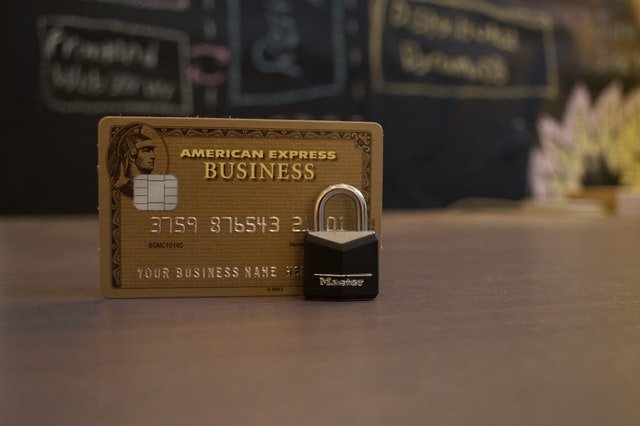IBAN and NRB number – what is it? Account number in IBAN format

IBAN and NRB number – what is it? Account number in IBAN format
Nowadays, the bank account number is our identifier. Let us give some examples to the unbelievers. When we pay for online purchases, we are less interested in the seller’s name or surname – the most important thing is that his account number is entered correctly. When starting work, at the stage of filling out a personal form, we are asked to provide our bank account number – no wonder, after all, this number is necessary to receive the bonus. When we start a project… well, we wouldn’t do much without a bank account number.
Just as it is difficult to imagine life without a mobile phone, it is also difficult nowadays to exist without a bank account number. Therefore, it is worth knowing what the individual elements of this number mean.
NRB (Bank Account Number)
NRB is the Polish standard for writing a bank account number, consisting of 26 digits in the following format:
ككAAAAAAAABBBBBBBBBBBBBB
Spaces have been added for clarity, in electronic systems the account number is written without spaces.
The bank account number consists of the following blocks:
- kk (two numbers) – this is a checksum calculated according to the IBAN standard (the algorithm is presented later in the article);
- AAAAAAAA (8 digits) – the settlement number of the institution (bank), assigned by the Central Bank;
- BBBBBBBBBBBBBBB (16 digits) – This is the customer’s account number.
Bank invoice number
From the Penal Code AAAAAAAA BBBBBBBBBBBBBBBBBB
The bank’s classification code takes positions 3 through 8 in the bank account number and is used to identify the addressee’s bank when sending a transfer or check. This number is usually used in the context of domestic billing. For international operations, the BIC code is used.
In Poland, the central bank is the holder of the clearing numbers. It is the responsibility of this entity to allocate a clearing number to individual banking institutions.
Accounting numbers consist of 8 digits. The meanings of the series of consecutive numbers are as follows:
- The first four digits are the banking institution ID. Central bank, commercial banks and cooperative bank associations are identified by 3 numbers followed by a zero at the end (3 numbers and 0 gives a total of 4 numbers). Cooperative banks, in turn, are identified by 4 numbers;
- The next three items are the bank branch ID. The string of three zeros – “000” – usually represents the headquarters of the financial institution;
- The last place is taken by the verification number, which is used to verify the correctness of the accounting number;
It is worth noting that it is possible to determine the bank on the basis of the settlement number.
What is the function of a bank bill number and why was it introduced
Today, hardly anyone remembers, but until July 2004, each bank had its own way of determining bank accounts. Account numbers in individual organizations contain letters, numbers, slashes, dashes, and spaces, as well as of various lengths. As a result, entering this data into the transfer form was a very tedious task and often ended up being a mistake.
Unfortunately, there is still a drawback to the old bank account numbering that even if the account number is entered incorrectly, the money still leaves the sender’s bank. It was received by the recipient’s bank, and after finding that it could not match the transfer to any of its accounts, it returned it to the institution that ordered the operation. Time passed, the transfer was traded between banks and it often happened that he “died” somewhere. Sometimes it happens that the money is returned to the account of the dispersed sender after a few days or even weeks.
The introduction of a new standard for the registration of account numbers – as a result of Poland’s accession to the European Union – was aimed at facilitating and speeding up bank reconciliations, reducing the costs of processing payment documents and reducing the number of complaints arising from incorrect entry of an account number. The use of a checksum eliminated the endless roaming of money between banks. Thanks to it, an entry error is detected when the account number is entered into the bank system, and the transfer does not take place.
What is an International Bank Account Number (IBAN)?
On the other hand, IBAN (International Bank Account Number) is the international standard for bank account numbering that was introduced in 2001, which was intended to facilitate the settlement of foreign transactions in Euro within the European Union. The IBAN standard was originally approved by the European Committee for Banking Standards (ECBS), but now serves as the international ISO-13616 standard and is used in more than 60 countries around the world (including those in Africa, Asia and Latin America).
In principle, the IBAN must compulsorily contain:
- two-letter country code (in the case of Poland, these are the letters PL),
- two digit verification number,
- BBAN Up to 30 alphanumeric characters (letters or numbers).
Simply put – the IBAN standard is nothing but an NRB number preceded by a country code. An interesting fact is that the length of the IBAN may vary depending on the country, for example in Belgium, the IBAN consists of 16 characters, in France – 27, and in Norway – 15 characters.
IBAN code format in Poland
The Polish bank account number complies with the IBAN standard and has the following structure:
PLkkAAAAAAAABBBBBBBBBBBBBBB
where:
- The first two letters designate the country code as the ISO 3166-1 alpha-2 standard . IBAN numbers for Polish bank accounts begin with the symbol “PL”;
- The next two letters make up a checksum;
- The next item is the so-called BBAN ( b asec b ank and ccount n umber) – the primary bank account number in Polish. It can contain up to 30 alphanumeric characters, some of which must be specified by the bank. BBAN code format – both its length and the positions of the individual components are standardized within a particular country. In Poland, the BBAN consists of 24 digits, 8 of which constitute the bank’s clearing number, and 16 digits – the customer’s account number;
The IBAN in transaction systems is written without spaces. On paper, the number is written in the form of 4-character strings separated by spaces; The last set may be less than 4 characters as long as the IBAN length may vary by country.
IBAN and NRB . format
The bank account number can be easily converted into an IBAN number by adding the letters PL to the beginning of the NRB number.
The image below shows the relationship between the IBAN components.
Click to enlarge
IBAN checksum
The checksum, as the name implies, is used to validate an IBAN. It is in positions 3 through 4 of the IBAN, immediately after the two-character country code.
IBAN Validation Algorithm:
- We take into account the full IBAN (including the country code). The number must be written without spaces.
- We check the length of this number in the context of a specific country (in Poland, the bank account number in the IBAN standard should consist of 28 characters).
- We pass the first four letters of the IBAN to its end.
- We replace the characters in the IBAN with the sequence of numbers. We make the following assumptions: “A” has been changed to “10”, “B” has been changed to “11” … “Z” has been changed to “35”. For the code “PL” we should get the number 2521, because we changed “P” to 25 and “L” to 21.
- At this point, we only got a series of numbers. We treat the obtained number as a single number and calculate the remainder by dividing this number by 97.
- If the remainder is 1, the checksum is true.
Example of calculating a checksum
Let’s calculate the checksum of the bank account of the Social Insurance Institution. Let’s follow the steps according to the algorithm that we described earlier:
- We consider an account with IBAN number PL8310101023000026139510000
- The number consists of 28 characters. A good sign, the number is probably right. So we do the following steps for the algorithm.
- After moving the first four characters to the end of the number, we get the following alphanumeric sequence: 101010230000261395100000PL83
- We convert letters into numbers, we get the number: 10101023000026139510000252183
- We find the remainder of dividing this number by 97. The remainder is 1.
- The remainder is 1, which means that the checksum is true.
IBAN Number and BIC / SWIFT Code
Short Appendix – When we make a foreign transfer in Euro, we do not have to provide only the recipient’s account number in IBAN format. It is also necessary to enter the SWIFT code , that is, the number that identifies the financial institution to which the funds will be transferred.
The same applies to incoming currency conversions requested by foreign contractors. If we want to receive a foreign currency transfer, we need to inform the party who made the request with the valid IBAN and SWIFT code in our bank .
|
SWIFT codes for Polish banks |
|
|---|---|
|
It does not have a SWIFT / BIC code, as it does not support external transfers (both incoming and outgoing). |
|
Summary
The introduction of NRB and IBAN numbers made it possible to transfer funds faster and automatically in domestic and international transactions. Thanks to standardized numbering, it was possible to reduce the number of incorrect transfers, speed up the procedure for transferring funds, and reduce costs associated with payment processing. From the perspective of the years, it can be assessed that this change has been beneficial to both banks and customers.
A tool for identifying the bank by account number
Did you know that banks can offer up to several hundred zlotys to open an account? Check the list of active banking offers, perhaps one of them will be interesting to you.




One Comment